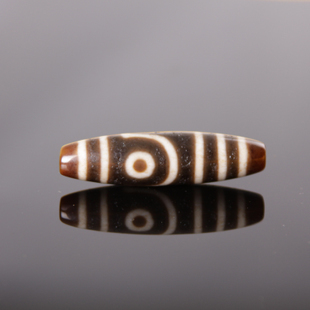by Philip Ball (2001)
"I believe that in the future, people will start painting pictures in one single color, and nothing else but color." The French artist Yves Klein made this remark in 1954, before embarking on a "monochrome" period in which each work was composed from just a single glorious hue. This adventure culminated in Klein's collaboration with Paris paint retailer Édouard Adam in 1955 to make a new blue paint of unnerving vibrancy. In 1957 Klein launched his manifesto with an exhibition, "Proclamation of the Blue Epoch," that contained eleven paintings in his new blue.
By saying that Yves Klein's monochromatic art was the offspring of chemical technology, I mean something more than that his paint was a modern chemical product. The very concept of this art was technologically inspired. Klein did not just want to show us pure color; he wanted to display the glory of new color, to revel in its materiality. His striking oranges and yellows are synthetic colors, inventions of the twentieth century. Klein's blue was ultramarine, but not the natural, mineral-based ultramarine of the Middle Ages: it was a product of the chemical industry, and Klein and Adam experimented for a year to turn it into a paint with the mesmerizing quality the artist was seeking. By patenting this new color, Klein was not simply protecting his commercial interests but also hallmarking the authenticity of a creative idea. One could say that the patent was part of his art.
The Impressionists and their descendants - van Gogh, Matisse, Gauguin, Kandinsky - explored the new chromatic dimensions opened up by chemistry with a vitality that has arguably not been equaled since. Their audiences were shocked not only by the breaking of the rules - the deviation from "naturalistic" coloration - but by the sight of colors never before seen on canvas: glowing oranges, velvety purples, vibrant new greens. Van Gogh dispatched his brother to acquire some of the brightest, most striking of the new pigments available and wrought them into disturbing compositions whose strident tones are almost painful to behold. Many people were dumbfounded or outraged by this new visual language: the conservative French painter Jean-Georges Vibert rebuked the Impressionists for painting "only with intense colors."
It was a complaint that echoes back through the ages, to be heard whenever chemistry (or foreign trade, which also broadens a culture's repertoire of materials) has made new or superior colors available to painters. When Titan, Henry James's "prince of colorists," took advantage of having the first pick of the pigments brought to the thriving ports of Venice to cover his canvases with sumptuous reds, blues, pinks, and violets, Michelangelo remarked sniffily that it was a pity the Venetians were not taught to draw better. Pliny bemoaned the influx of bright new pigments from the East to corrupt the austere coloring scheme that Rome inherited from classical Greece: "Now India contributed the ooze of her rivers and the blood of dragons and of elephants."
That the invention and availability of new chemical pigments influenced the use of color in art is indisputable. As art historian Ernst Gombrich says, the artist "cannot transcribe what he sees; he can only translate it into the terms of his medium. He, too, is strictly tied to the range of tones which his medium will yield."
So it is surprising that little attention has been given to the matter of how artists obtained their colors, as opposed to how they used them. This neglect of the material aspect of the artist's craft is perhaps a consequence of a cultural tendency in the West to separate inspiration from substance. Art historian John Gage confesses that "one of the least studied aspects of the history of art is art's tools." Anthea Callen, a specialist on the techniques of the Impressionists, makes a stronger criticism:
Ironically, people who write on art frequently overlook the practical side of their craft, often concentrating solely on stylistic, literary or formal qualities in their discussion of painting. As a result, unnecessary errors and misunderstandings have grown up in art history, only to be reiterated by succeeding generations of writers. Any work of art is determined first and foremost by the materials available to the artist, and by the artist's ability to manipulate those materials. Thus only when the limitations imposed by artists' materials and social conditions are taken fully into account can aesthetic preoccupations, and the place of art in history, be adequately understood.

![Pendant in the form of a knotted dragon, Eastern Khou dynasty (770-256 B.C.) [Source: The Metropolitan Museum of Art]](https://images.squarespace-cdn.com/content/v1/516d1575e4b0bacecd42022e/1366945797536-1JDHUHECVUPYCV5E8VO0/knotted_dragon.jpg)